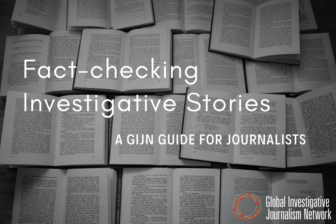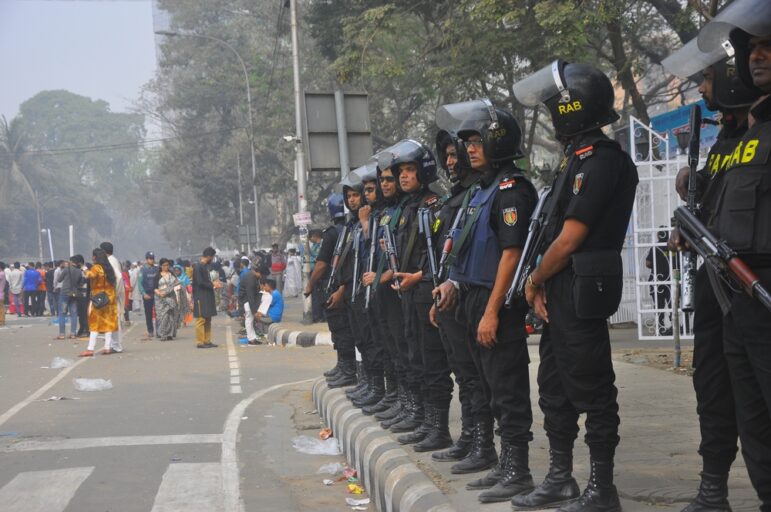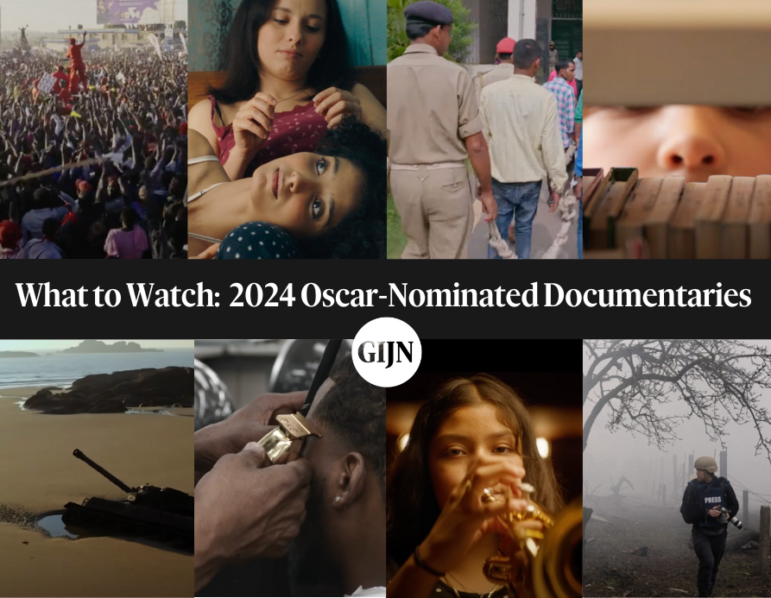

Lessons from a Retracted Investigation in India: How to Avoid Fabricated Evidence
Read this article in
In October 2022, The Wire, an Indian nonprofit newsroom, retracted a sensational investigative series on social media giant Meta (owner of Facebook) after discovering that evidence for the stories was fabricated. The stories — supported by screenshots, an unnamed Meta source, and supposedly leaked emails — falsely claimed that Meta had removed a critical Instagram post at the behest of an official from India’s ruling party. The Wire apologized for mistakes made in the series, launched an internal review, and lodged a police complaint of fabrication against one of its own editorial consultants.
As The Wire readily conceded, its own vetting systems failed to flag the false claims about Meta. The Wire’s verification mistakes echo rare but damaging due diligence failures suffered by some of the world’s leading publications, from The New York Times to the Guardian. In the most alarming cases, fabricated claims or documents have been presented to editors by dishonest sources, rogue reporters, or ideologically-driven “sting” operatives seeking to discredit ethical media — deceptions that are typically caught by rigorous editorial checking systems before anything is published.
In The Wire’s case, its own review pointed to a lack of technical checking skills, and a rush to publish, as key reasons.
However, in an alarming state response to the editorial errors, a force of roughly two dozen police officers raided both The Wire’s newsroom and the homes of its three founding editors a few days after the retraction, seizing laptops and phones. This draconian action was immediately condemned by press freedom groups and fellow media outlets in India.
In its own police complaint, The Wire alleged that it had been deceived by an editorial consultant, who, it claimed, had supplied falsified emails and documents purportedly from anonymous sources within Meta, as well as emails from two independent experts that seemingly corroborated other evidence. The internal review was triggered when those two experts wrote to a Wire editor to deny having played any role in evaluating the evidence.
In subsequent media interviews, the consultant admitted to errors, but disputed The Wire’s complaint, blaming sources for the falsehoods, and saying he was cooperating in the police inquiry. Despite the review, legal challenges, police investigations, and media speculation that The Wire was “set up,” mystery still surrounds the precise motives and the parties involved in the deception.
The Wire was also widely criticized for doubling down on its claims with follow-up stories, despite persuasive counter-claims from Meta. For instance, Meta pointed out that an externally-created Meta Workplace account that reporters relied upon “appears to have been set up specifically in order to manufacture evidence to support The Wire’s inaccurate reporting.”

Narasimhan Ram, former editor-in-chief of the Indian daily, The Hindu, discussed The Wire incident and the lessons learned from it. Image: Screenshot, The Hindu
Good analysis of The Wire incident is hard to come by in India’s highly politicized media climate. But in a recent Reuters Institute for the Study of Journalism webinar, Narasimhan Ram — director of the Hindu Publishing Group and former editor-in-chief of India’s daily The Hindu — described how India’s media and The Wire itself have responded to the controversy. Ram also laid out best practices for investigative newsrooms to avoid both deliberate and unintentional source errors.
“It was an egregious series of blunders,” acknowledged Ram. “Of course, there are plenty of mistakes in Indian newsrooms, but here was someone taking on Meta and the IT head of the ruling party, so it was something many people would gloat over. But journalists make mistakes — take some of The New York Times stories on weapons of mass destruction in Iraq.”
He added: “I have not seen any evidence that this was part of any great political conspiracy, or that The Wire was set up.”
Mitali Mukherjee, director of journalist programs at the Reuters Institute, who also appeared on the panel, summed up the impact of the false story. “It had rather dire consequences for the platform — the hit it took for the trust element… a very real backlash,” she said. “Trust was broken within the very crucial confines of a newsroom.”
Ram suggested that The Wire’s worst mistake was “to double-down and treble-down” on its story, after serious questions were raised about the authenticity of its core evidence.
However, he said extreme actions by the police — together with The Wire’s subsequent apologies and remedial steps, and its existing, hard-won reputation for integrity — had helped to rebuild public support for the publication.
“The police swooped down upon them, seized devices of all three founding editors and people in no way involved with the story — so while it looked terrible for The Wire, this won them a lot of sympathy from the public and from the Editors Guild of India and from press clubs,” he explained. “Because this was an over-the-top response by the police.”
“The Wire — an independent, not-for-profit publication with very limited resources — has established credibility for standing up to government,” Ram added. “They did a series of very good stories on Pegasus (spyware), which is of great public importance in India. How can a journalist recover from a severe setback like this? Work hard and get a great story.”
Protecting the identity of whistleblowers and at-risk sources is, of course, an important principle for watchdog reporters, and anonymous sources have been central to some of the most famous and impactful investigations, from Watergate and the Panama Papers to the GuptaLeaks, which led to the ousting of a corrupt South African president.
Similarly, national security, crime, and political reporters routinely break big stories with the help of anonymous sources, and many have enviable records of reporting that’s earned the trust of not only their editors but their sources and readers.
While recognizing the role of confidential sources, Ram said it was important to have rules around anonymity — and he warned that, in general, a lack of safeguards lay at the heart of the fabrication threat.
“Journalists use sources, but sources also use or exploit journalists — it’s a two way process, so you have to lay down very clear rules,” he said.
As useful guidelines for newsrooms, Ram suggested that anonymous source evidence should generally be considered when:
- It is clear that the information cannot be obtained from any other means, such as public documents or alternate, named sources.
- The story deals with an important public interest topic.
- The evidence is closely supervised by at least one editor with knowledge of the topic.
- Reporters are equipped with clear policies on when and how they can promise anonymity, and on the extra scrutiny, skepticism, and risk that may follow.
Ram warned that even close supervision of confidential leaks may not be enough. “In The Wire case, it actually was supervised by a top person in the organization, who, to his credit, did not throw the [staff] reporter under the bus, and that reporter continues to work for them,” he explained.
 Ram also recommended that newsrooms assign one senior journalist to play “devil’s advocate” around the motives and veracity of leaks in sensitive investigations. (This technique — as well as many others — is included in GIJN’s Guide to Fact-Checking Investigative Stories.) “The person doesn’t need to be an editor,” he explained. “Just get any experienced journalist to get in on it and be skeptical, and then there won’t be a repetition of this kind of mistake.”
Ram also recommended that newsrooms assign one senior journalist to play “devil’s advocate” around the motives and veracity of leaks in sensitive investigations. (This technique — as well as many others — is included in GIJN’s Guide to Fact-Checking Investigative Stories.) “The person doesn’t need to be an editor,” he explained. “Just get any experienced journalist to get in on it and be skeptical, and then there won’t be a repetition of this kind of mistake.”
Investigative ‘Red Flags’ that Should Trigger Extra Scrutiny
Unusual denials. While governments and corporations routinely deny allegations of wrongdoing, Ram noted that their prior denials to media tend to have a common style, or are couched in spin. He said editors should take note, and pause, when a denial breaks from the pattern. For instance, when a spokesperson’s denial is unusually detailed or categorical, or when the subject alleges that the evidence presented for comment has been fabricated or manufactured. Claims like these warrant a re-examination of the evidence. “When the subject of a story states the evidence is fake, you have to take that seriously,” he noted.
Evidence that either fails the “smell test,” or seems too good to be true. Ram pointed to the clumsy grammar in an email falsely attributed to a professional Meta spokesperson as an example of contextual evidence “that clearly doesn’t smell right.” He urged reporters and editors to apply common sense as a safeguard. “Ask yourself: ‘Does this make sense?’”
Contributors refusing byline credit. Ram said editors should be especially vigilant when a reporter or contributor claims that their own name on a story must be excluded in order to protect the identity of their anonymous source.
Confirmation bias — especially involving controversial subjects. “This is when you interpret new evidence in line with your preconceived beliefs,” he said. “The idea that assigned reporters and opinion writers should have a different space holds true. Keep them separate. Investigate; bear witness; verify — if you do that, bias will be reduced.” Ram said editors should also be conscious of the temptation to “want to believe” further sensational evidence of wrongdoing about subjects with existing poor reputations.
Technical evidence that can’t be verified using in-house vetting systems. “There were some tech issues beyond the grasp of some of the people working on the story,” Ram said, referring to the false digital evidence about Meta. “[The Wire] has said, in future, they will not publish investigative stories involving technical data without consulting an independent tech expert — I think that’s going far. But that’s a good safeguard for serious investigations.”
The Reuters Webinar also offered up other tips for dealing with investigations that have fallen apart after being published:
- Own up to the mistakes, investigate root causes, and make systemic changes. Do not seek scapegoats. “The Wire has brought in a new editor, and set up a new editorial board structure, where the editor is accountable to them,” said Ram. “They made a major change to their editorial operations.”
- Don’t double down on the same claims in follow-ups if a story is crumbling — and guard against pride.
- If a contributor’s flawed sourcing practices led to any fabrications, then re-examine prior investigations by that contributor, and publicly correct any mistakes.
- Don’t abandon an important public interest topic due to embarrassment about previous errors on the subject. Rather, Ram said newsrooms should continue to investigate using stronger editorial safeguards, while transparently noting those earlier mistakes for audiences.
- Express sincere contrition — but don’t grovel. “How sorry is sorry enough?” Ram asked. “I think The Wire has apologized sufficiently.”
“You have to be highly skeptical when it comes to sensitive investigations,” Ram emphasized, lest your next investigation becomes another cautionary tale. “Is the source who he or she says they are? Information must be vouched for, and rigorously verified.”
In her critique of the saga, Pamela Philipose, the ombud for The Wire, described the series as “a monumental blunder of reportage” — but said it was followed by an encouraging show of solidarity among independent outlets, after the “police assault on media freedom.”
“How do editors, reporters, and those on the desk protect themselves and their organization against deception in a millennium steeped in disinformation?” Philipose asked. “The one solution… is to keep plugging away. Only good journalism will steer The Wire out of the Meta thicket.”
You can watch the entire Reuters Institute webinar on YouTube:
Additional Resources
GIJN’s Guide to Fact-Checking Investigative Stories
GIJN’s Guide to Working with Whistleblowers
Seeking Comment for Your Investigation: Tips for the ‘No Surprises’ Letter
 Rowan Philp is GIJN’s senior reporter. Rowan was formerly chief reporter for South Africa’s Sunday Times. As a foreign correspondent, he has reported on news, politics, corruption and conflict from more than two dozen countries around the world, and has also served as an assignments editor for newsrooms in the UK, US, and Africa.
Rowan Philp is GIJN’s senior reporter. Rowan was formerly chief reporter for South Africa’s Sunday Times. As a foreign correspondent, he has reported on news, politics, corruption and conflict from more than two dozen countries around the world, and has also served as an assignments editor for newsrooms in the UK, US, and Africa.











